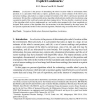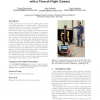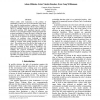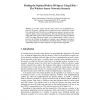98 search results - page 8 / 20 » Range Data Approximation for Mobile Robot by Using CAN2 |
ALGORITHMICA
2000
13 years 8 months ago
2000
Localization is the process of determining the robot's location within its environment. More precisely, it is a procedure which takes as input a geometric map, a current estim...
HRI
2011
ACM
12 years 12 months ago
2011
ACM
Pointing gestures are a common and intuitive way to draw somebody’s attention to a certain object. While humans can easily interpret robot gestures, the perception of human beha...
ICRA
2002
IEEE
14 years 1 months ago
2002
IEEE
—This article describes a rigorous and complete framework for the simultaneous localization and map building problem for mobile robots: the symmetries and perturbations map (SPma...
CORR
2002
Springer
13 years 8 months ago
2002
Springer
Global mobile robot localization is the problem of determining a robot's pose in an environment, using sensor data, when the starting position is unknown. A family of probabi...
ICANNGA
2007
Springer
14 years 2 months ago
2007
Springer
Abstract. In wireless sensor networks where sensors are geographically deployed in 3D spaces, a mobile robot is required to travel to each sensor in order to download the data. The...




